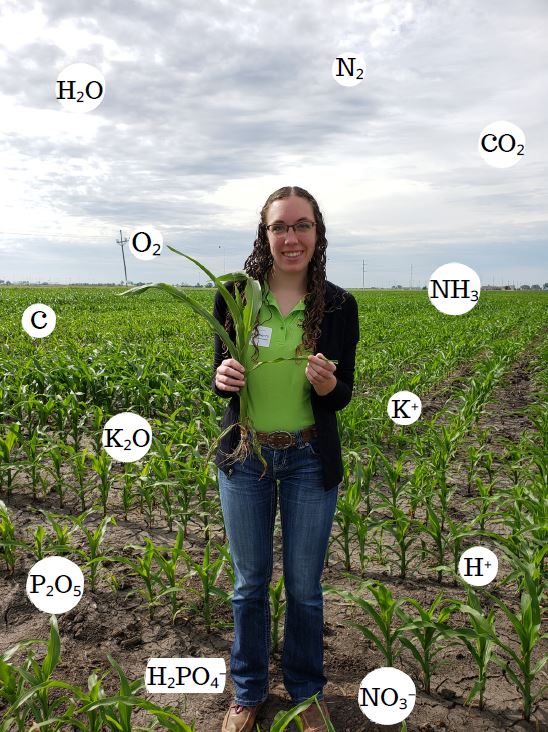
When growing crops of any type, it’s important to understand the required inputs in order to receive the desired yields. One of these inputs, arguably the most important and critical one, revolves around nutrient management. All plants have these requirements, whether it be crops grown for biofuels, fruit production, or landscape ornamentals. Each plant needs various amounts of nutrients, which can be used to classify them (by quantity) into macro or micro nutrients. It’s important to remember that each one is vital for plant growth, simply required in different doses. As a sidenote – this blog is going to be mainly focused upon corn production, but all of these elements are necessary for any plant you’re trying to grow! First I have a couple questions to spark your curiosity about nutrients in plants…
- A plant can be deficient in oxygen, how is that possible?
- Plants need calcium just like humans do. If it doesn’t go towards bone and teeth strength, then what’s its purpose?
Macronutrients
Let’s start with the big three: carbon, hydrogen, and oxygen. If you’re reading a fertilizer label, they don’t typically advertise for these elements. So, where do plants take them from? Why are they necessary for plant life? Should I be worried that my garden isn’t receiving enough hydrogen? The simple answer is that no one should be concerned about their plants being nutrient deficient in C, H, or O, as long as the plants are surrounded by air!
Carbon (C) – Thanks to many fields of science, we know that carbon is the base for life on Earth! This means that if plants are going to continue to be alive, they must obtain and maintain C. In more direct terms, plants produce and uses chains of carbon with other atoms called carbohydrates, lipids, proteins, and nucleic acids. But what happens if the plant is unable to take in carbon? This would be a very unfavorable scenario for the plant, especially since carbon is essential to photosynthesis. More specifically, without carbon (in the carbon dioxide form) the Calvin cycle wouldn’t occur. This means there’s no G3P, which helps make glucose, and without energy the plant cannot continue to live.
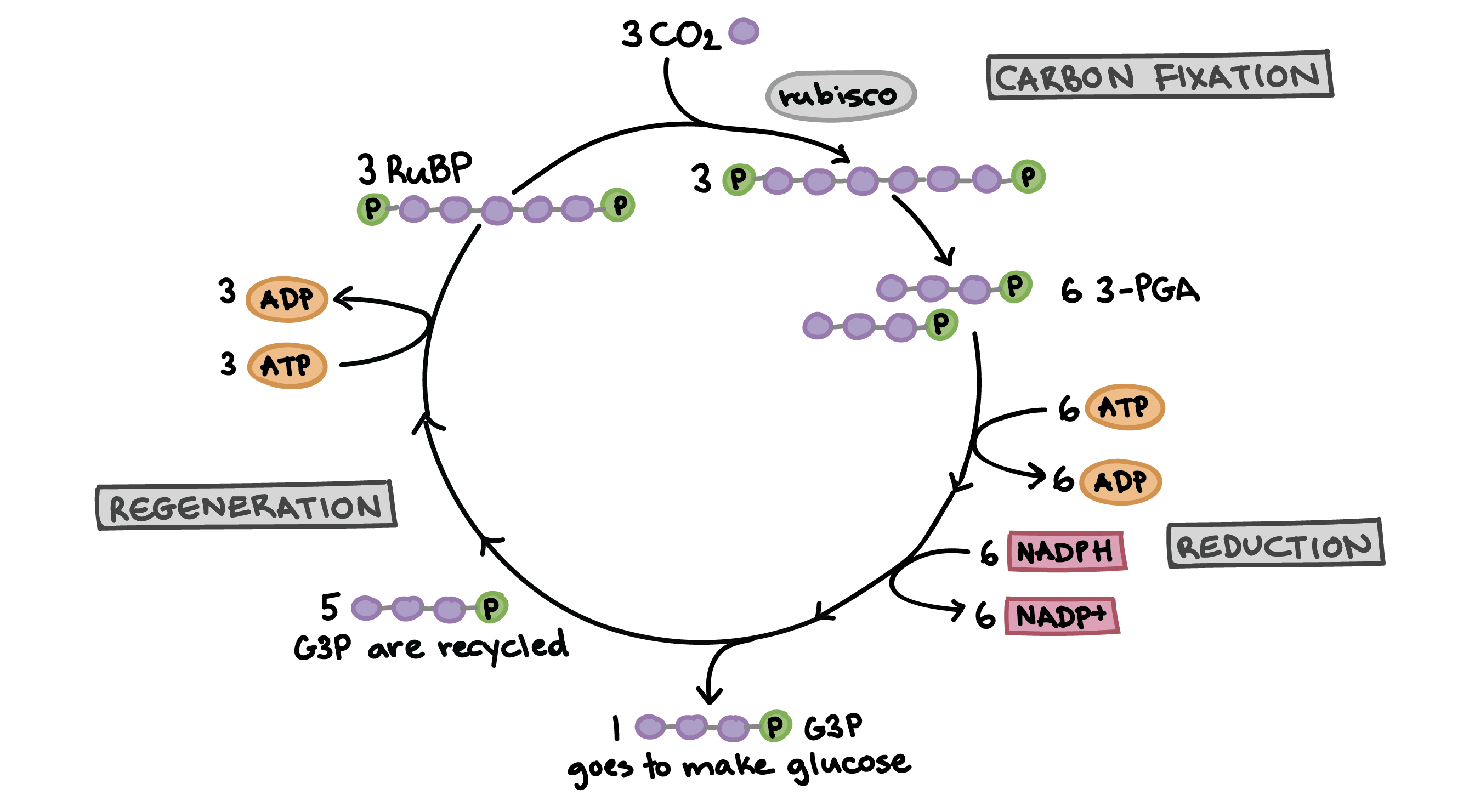
This depicts the Calvin cycle in photosynthesis. Diagram from Khan Academy
Hydrogen (H) – Whenever I think of elemental hydrogen, I don’t normally think of it as a nutrient. I don’t directly eat anything that is marketed as “high in hydrogen”, so how could a plant use it? To start off with, every living organism on Earth needs water (H₂O) to live. Plants use water to obtain hydrogen atoms when splitting H₂O molecules through the light reaction of photosynthesis. The hydrogen ion is then used to create NADPH, which is a crucial ingredient in the Calvin cycle. If a plant is missing this chemical compound, then photosynthesis would cease and the plant would die.

This shows the light-dependent reactions in photosynthesis, commonly referred to as the z scheme. Image from LibreTexts
Oxygen (O) – Wait a minute – oxygen is a product of photosynthesis, why would a plant need to take in oxygen too? In order to break down food through aerobic respiration, there must be oxygen present. Yes that’s right, plants respire just like humans do! Cells within leaves and stems obtain oxygen atoms that are a product of photosynthesis. However, cells found in areas that aren’t photosynthetically active must find oxygen elsewhere. To solve this issue, roots are able to take in O₂ from the air between soil particles. If the ground is saturated to capacity, then the roots cannot take up oxygen in the gas state. If the area is flooded for longer than 72 hours, it’s likely the plant will run out of oxygen and not recover.

The chemical equation for photosynthesis.
Nitrogen (N) – This is a much more commonly discussed nutrient, especially since it has a huge correlation to high yields in corn production. If you were to walk into a farmer’s field, you would be surrounded by nitrogen in many forms! N₂ is a gas found in the air, whereas NO₃⁻, NH₄⁺, and NH₃ are compounds found in the soil. But if nitrogen is found in the air, why can’t corn absorb it like carbon or oxygen? This is because corn can only take up nitrogen when it’s in a nitrate form, which can be found in solutions and attached to soil particles! When taking a closer look at NO₃⁻, it’s more prone to being lost to the environment due to its negative charge. Soil naturally has a negative charge, which means that a nitrate is more likely to move elsewhere in the environment than wait around to be absorbed by a plant. This is why many agriculturists use anhydrous ammonia as a N fertilizer, because it contains NH₃ and not NO₃⁻. Overtime soil microorganisms will convert ammonia to a plant available nitrate. Why is nitrogen so important in corn physiology? N is essential to grain fill and development. This means that if the plant is deficient in nitrogen, the kernels and ear won’t fill to their genetic potential. A common symptom of N deficiency is a yellowing midrib on a lower leaf.
Phosphorus (P) – This is another very important macronutrient! In a similar respect to nitrogen, plants are unable to absorb and utilize the elemental form of P. This creates a problem in fields, because P is most commonly found in a plant unavailable form! Luckily, roots have a symbiotic relationship with Mycorrhizal fungi which are able to turn P into a more usable form. Corn can easily uptake phosphates, and the most common compounds are H₂PO₄⁻ and HPO₄²⁻. Since phosphates have negative charges, they are more prone to leaving the soil than the elemental form (similar to nitrates). This is why synthetic fertilizers that contain significant amounts of phosphorus are delivered in a P₂O₅ compound. Why is phosphorus so important in corn physiology? P is directly correlated to crop maturity, yields, and overall plant growth. More specifically phosphorus is a huge makeup of sugar phosphates, which directly affects ATP. Energy transfer with ATP is crucial, due to it’s role in both RNA and DNA. A lack in P will affect the overall efficiency of any plant. Phosphorus deficiency in corn appears in older leaves and starts as a purple hue. An increase in severity will turn leaf margins brown.
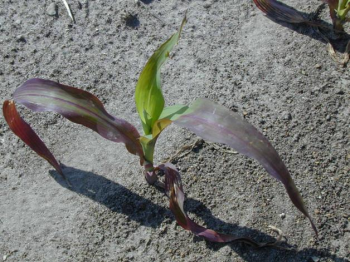
Phosphorus deficiency in corn. Image from Channel.
Potassium (K) – When applying synthetic fertilizers, it’s common to see potassium in the K₂O form. However, this form is not immediately available to plants. Plants can only take up K+ when it’s in a solution. This form differs from the available compounds of N and P, since potassium is a cation. Why is potassium so important in corn physiology? A deficiency in K can have a multitude of negative affects upon the plant. This could be seen as an increase in susceptibility to drought, temperature stressors, and pests. Agronomists refer to K as “the quality nutrient”, meaning there’s a direct connection to traits like seed vigor, size, color, and shape. To be more specific, potassium helps build cellulose, increase protein content, maintain turgor, and move sugars and starches throughout the plant’s vascular system. K deficiency symptoms start as a yellowing of leaf margins on older leaves, and an increase in severity turns the pale color to a brown necrosis.
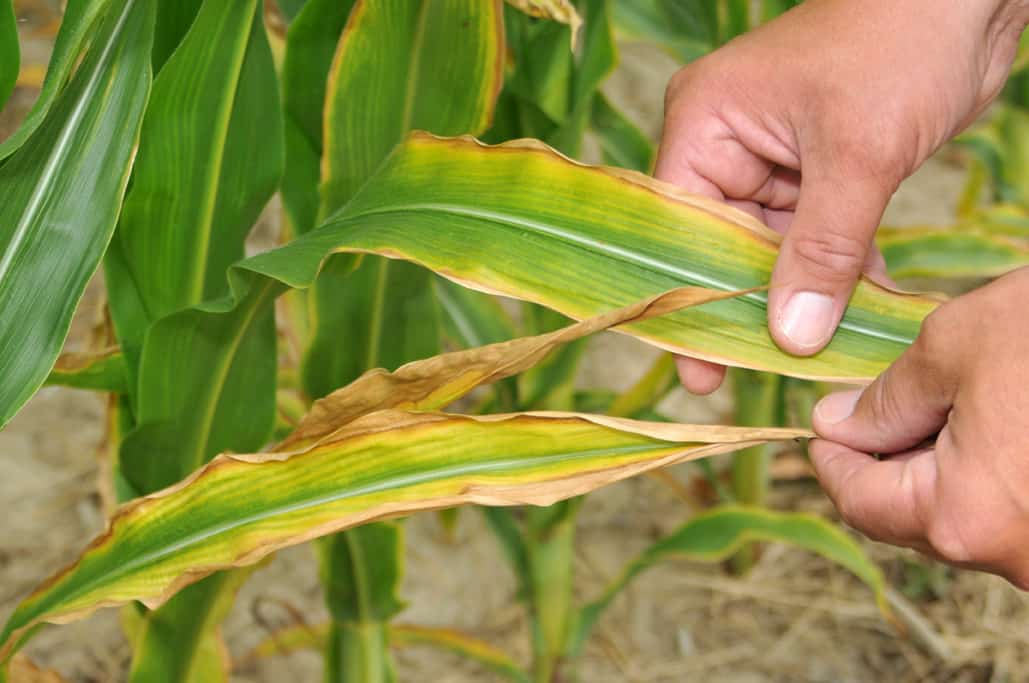
Potassium deficiency in corn. Photo from Thompsons.
Secondary Macronutrients
There are three elements that fall under this category, as they’re needed in higher quantities than micronutrients but lesser amounts than N, P, and K.
Calcium (Ca) – Calcium deficiencies are most common in sandy and/or acidic soils, since the Ca ions can be leached through the soil profile. Similarly to potassium, Ca²⁺ can only be imbibed by plants when in a soil solution. Why is calcium so important in corn physiology? Ca holds a vital role in the creation of cell walls and membranes. Calcium deficiency symptoms are visible in new growth, so in corn this would be around the growing point. It typically appears as a yellowing color, slowed growth, and leaf tips sticking together.
Magnesium (Mg) – Without Mg, a plant would not be able to photosynthesize. This element is a sizable component within chlorophyll molecules, which is 100% necessary for capturing the sunlight’s energy! Additionally, Mg serves as a phosphorus carrier. Simply put – if there’s not enough Magnesium then the plant would be unable to uptake P, even if it was available in the soil! Mg²⁺ is the plant available form, and can be heavily affected by the pH and sandiness of soils. Mg deficiencies are first seen in older and lower leaves, starting as a purple interveinal discoloration.
Sulfur (S) – The last, but certainly not least, macronutrient can be absorbed both through the roots and stomata openings. In the environment, sulfur is commonly found in the air as SO₂ and within soil solutions as SO₄²⁻. Unlike the previous secondary macronutrients, this one is taken up as an anion as opposed to a cation. Due to the negative charge on a sulfate molecule, it is mobile in the ground (just like nitrate or phosphate) and can be leached through the soil profile. Why is sulfur so important in corn physiology? Without adequate S, some amino acids and proteins would be unable to synthesize. Sulfur also has a connection to winter hardiness, which is a major trait in certain crops. S deficiency in corn appears as a general yellowing of younger leaves, starting between veins but widening to encompass the entire leaf with increasing severity.
This is merely a glimpse into some of the chemical factors and management systems that a row crop grower oversees each and every year. If you liked this blog or learned something new from it, let us know! Or maybe if you’d like to see a similar breakdown of micronutrients too? Either way I love writing about agronomic science and can’t wait to share another blog with you all!
-Rosie














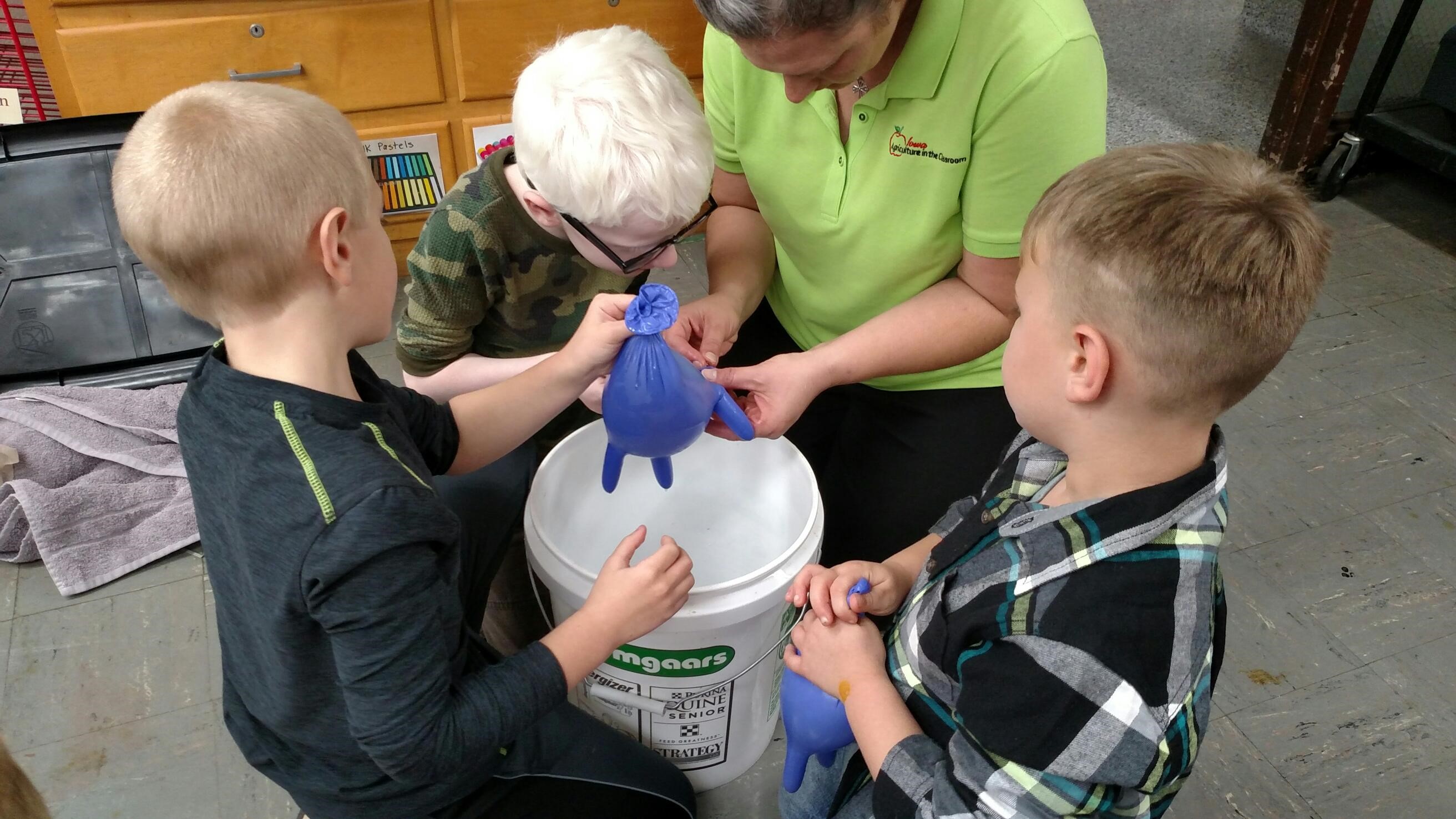

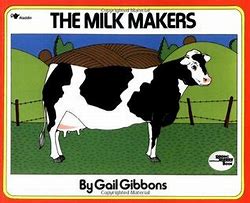
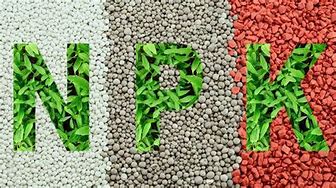





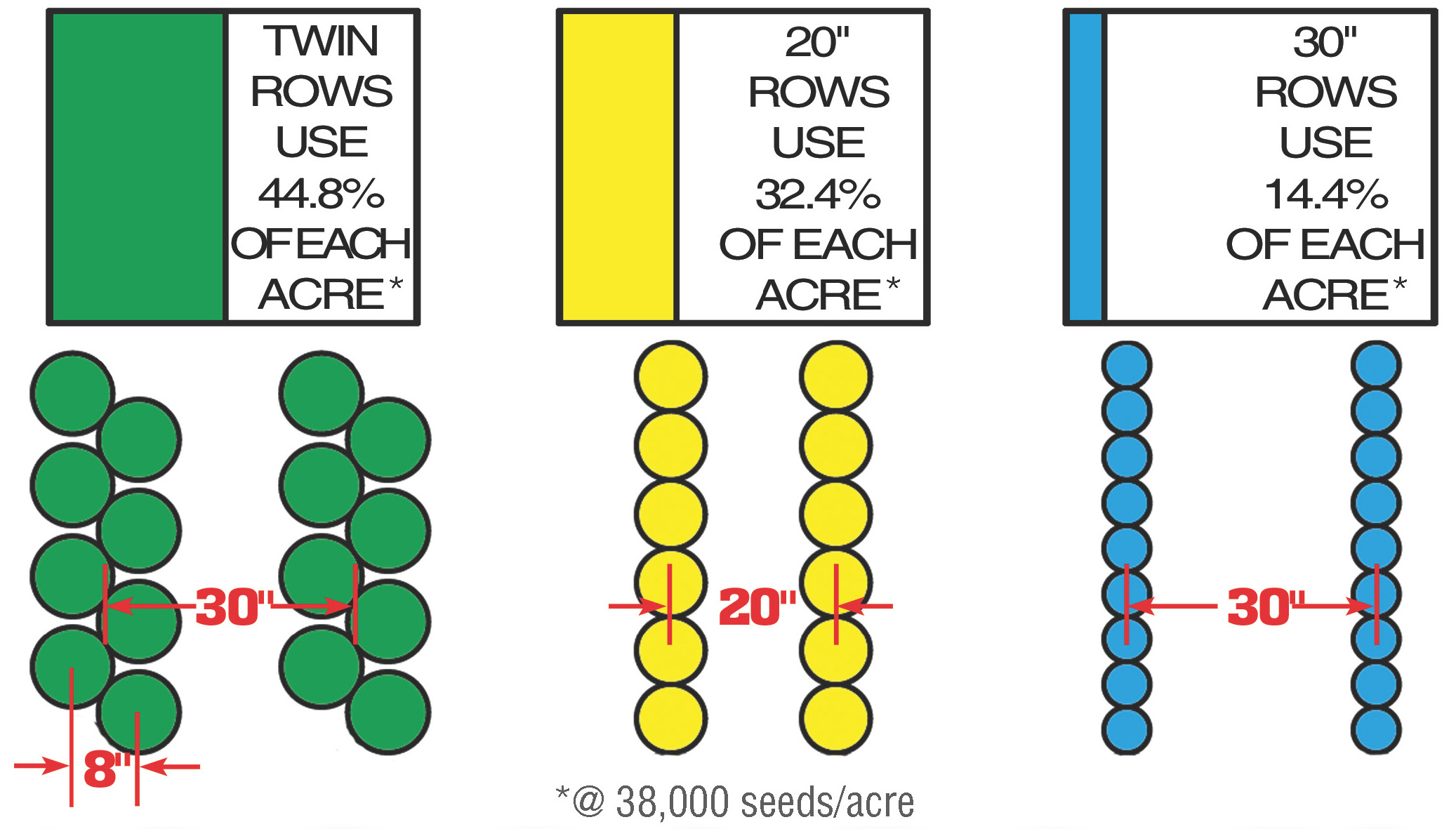

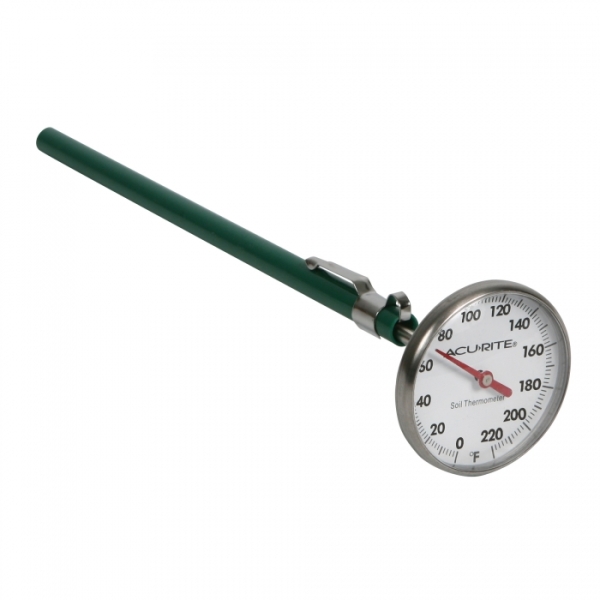
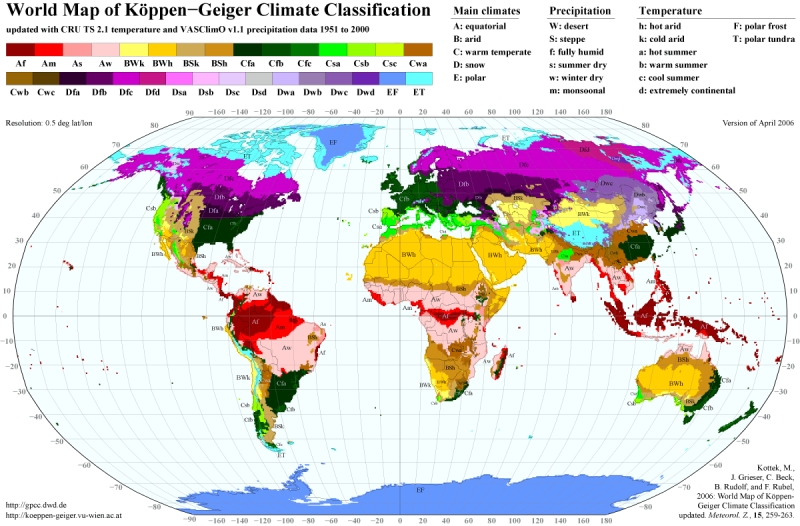
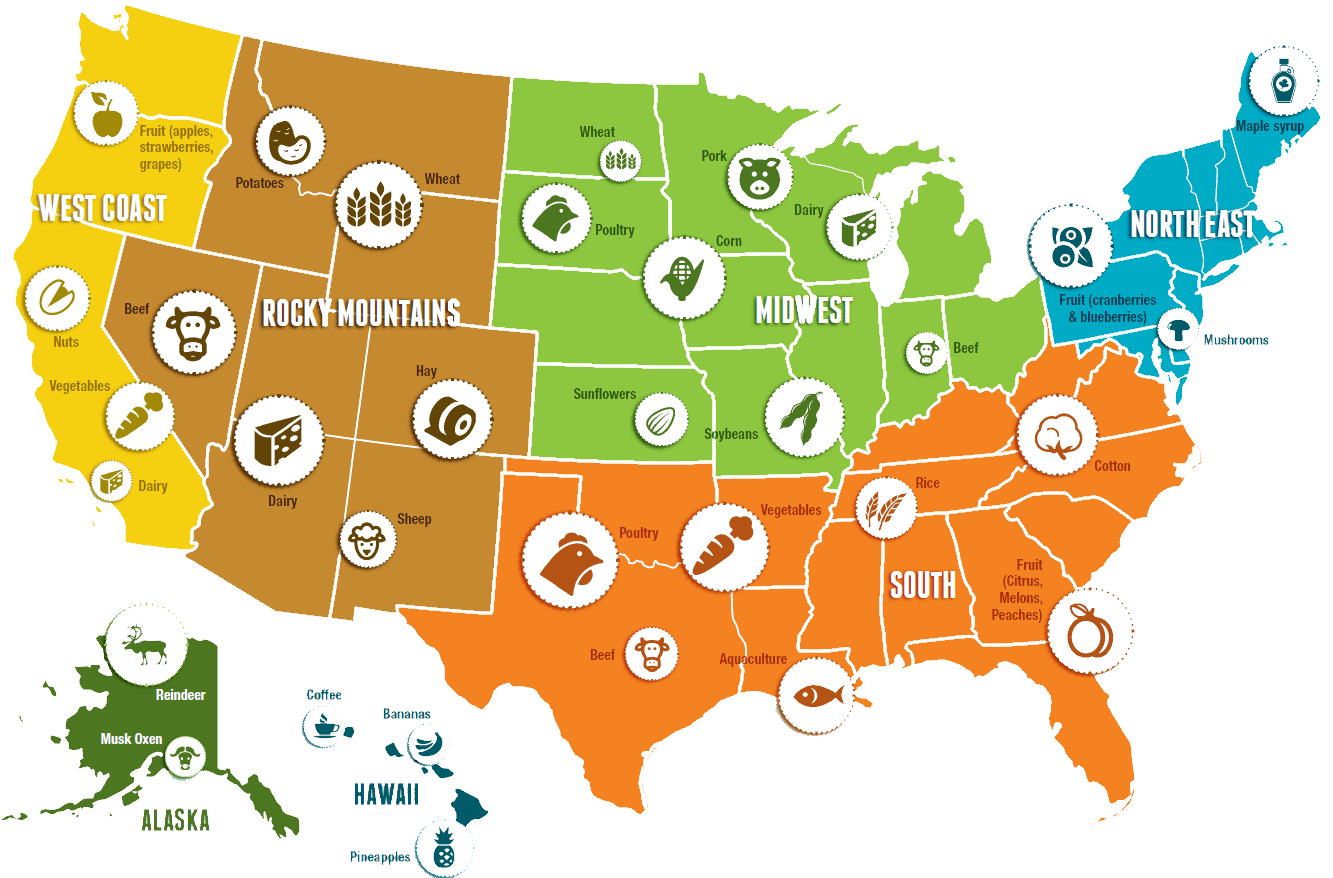









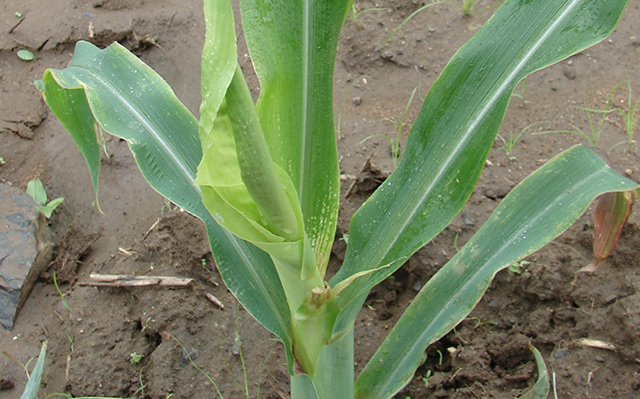
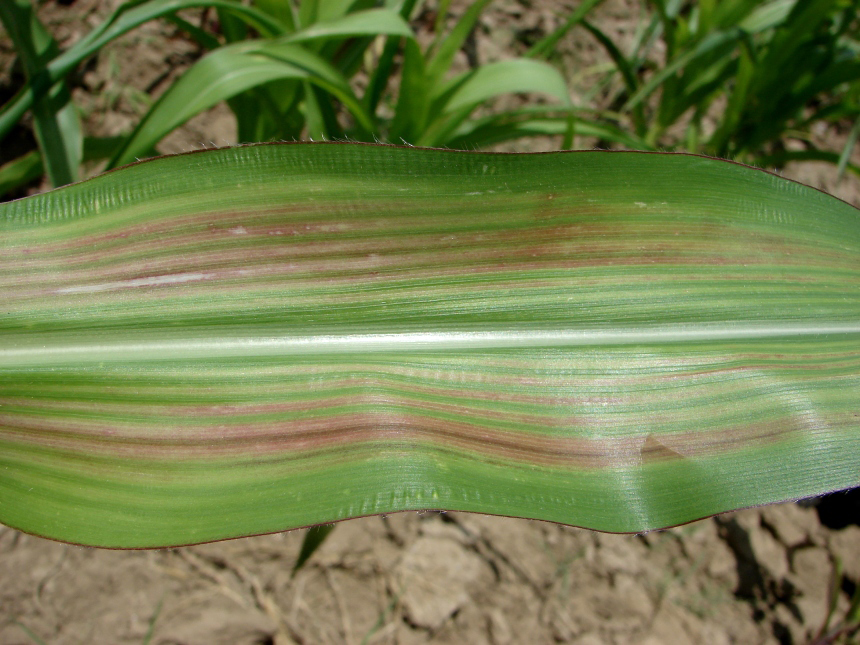
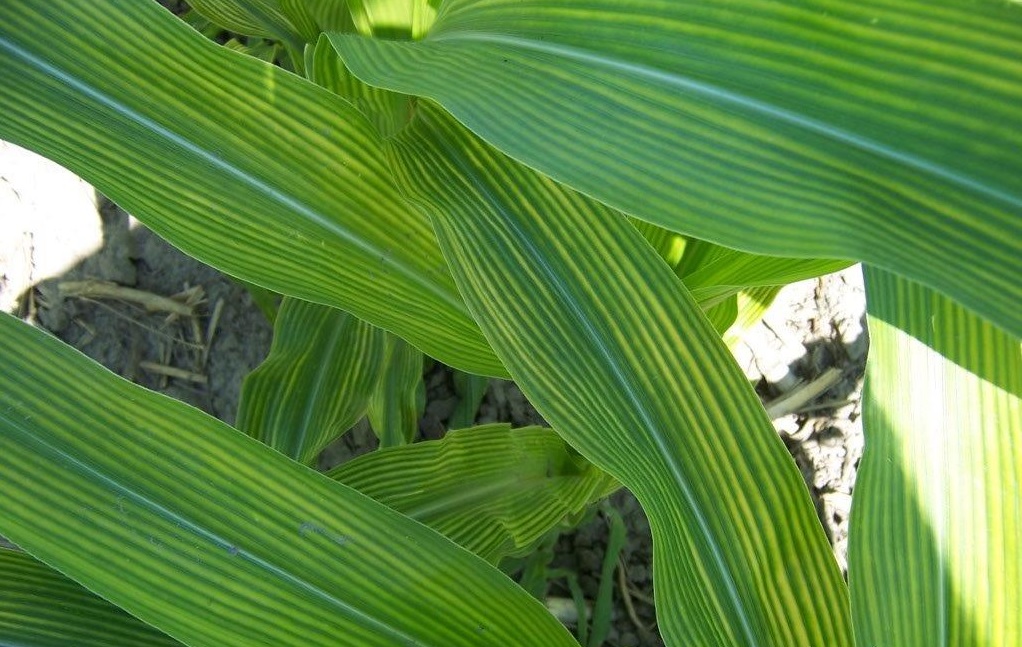
 Fall is in the air. The farmers are out combining their crops in the fields, and fall decorations are set out. Mums, pumpkins, and scarecrows add a festive touch to porch stoops. Scarecrows are now often used as fun fall decorations, but did you know they once served an agricultural purpose?
Fall is in the air. The farmers are out combining their crops in the fields, and fall decorations are set out. Mums, pumpkins, and scarecrows add a festive touch to porch stoops. Scarecrows are now often used as fun fall decorations, but did you know they once served an agricultural purpose?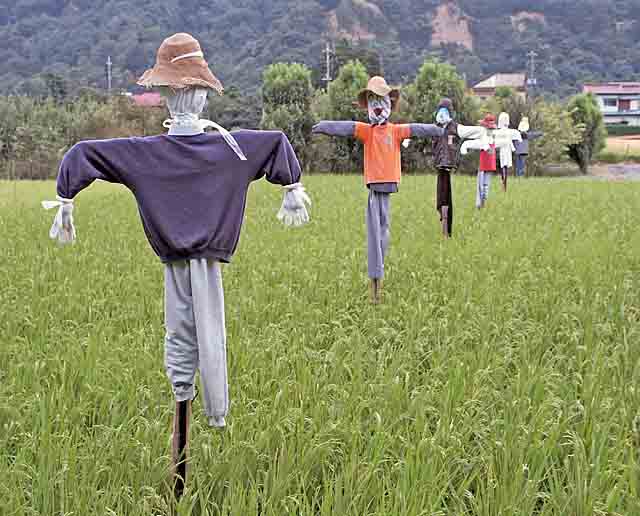 Japan had their own version of scarecrows called a kakashis. This scarecrow closely resembled a person. It was dressed in a raincoat and a round straw hat. Farmers added bows and arrows to make the kakashis appear to be more threatening.
Japan had their own version of scarecrows called a kakashis. This scarecrow closely resembled a person. It was dressed in a raincoat and a round straw hat. Farmers added bows and arrows to make the kakashis appear to be more threatening. frighten away birds from eating crops in the field. For thousands of years, farmers have tried to keep pests like crows from eating the seeds and plants in their fields. Before scarecrows were around, during the Middle Ages, in England, young boys would walk through the wheat fields making loud noises with wooden clappers to scare the birds away. This was the child’s main job on the farm. They were called
frighten away birds from eating crops in the field. For thousands of years, farmers have tried to keep pests like crows from eating the seeds and plants in their fields. Before scarecrows were around, during the Middle Ages, in England, young boys would walk through the wheat fields making loud noises with wooden clappers to scare the birds away. This was the child’s main job on the farm. They were called 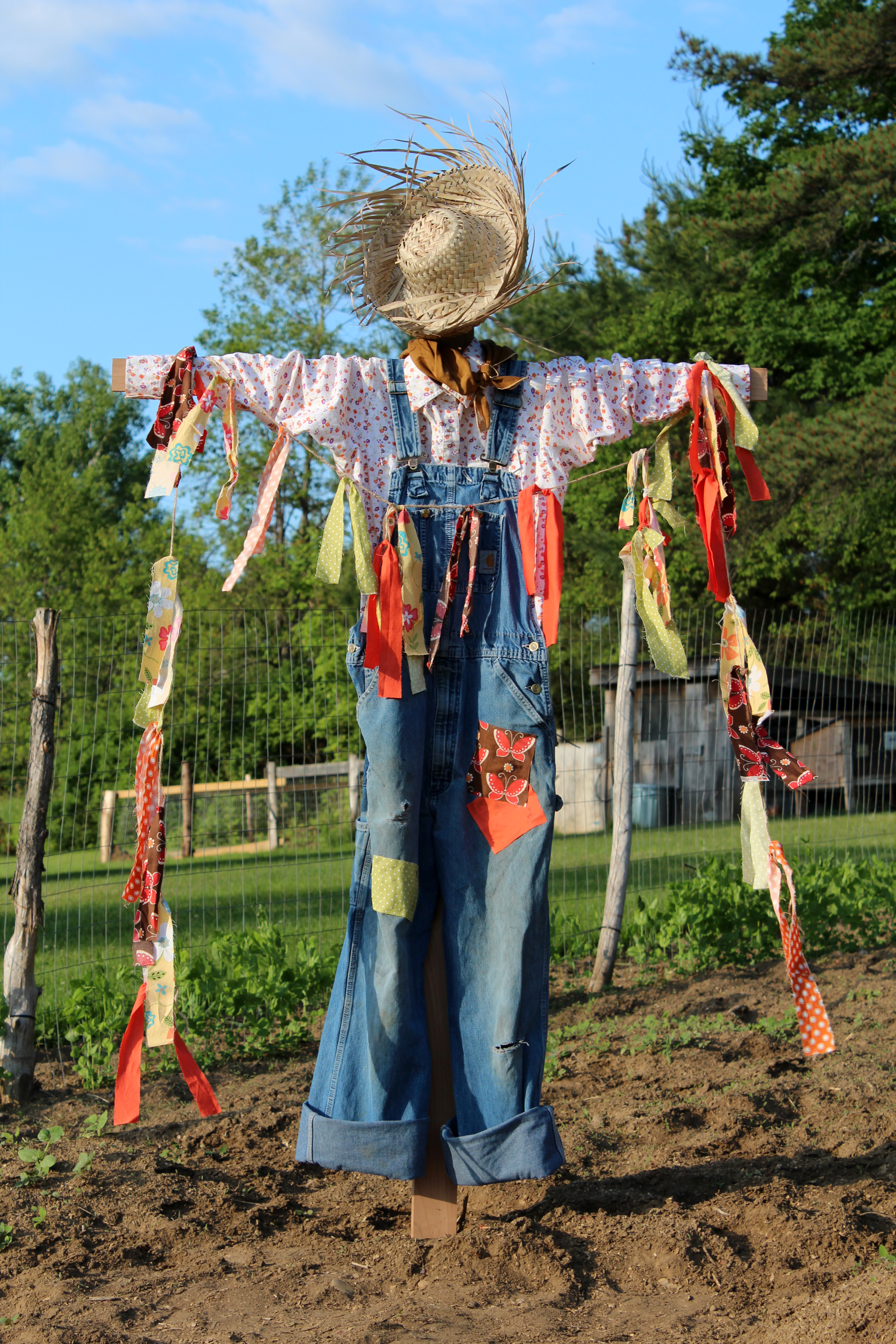 Make your own scarecrow
Make your own scarecrow